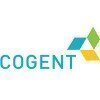Filter interviews by
Alyaum Interview Questions and Answers
Be the first one to contribute and help others!
Interview questions from similar companies

I applied via Walk-in and was interviewed in Dec 2024. There were 2 interview rounds.
Process planning refers to the methodical approach of determining the best possible way to manufacture a product or deliver a service by considering various aspects such as resources, timelines, and methodologies involved in production or execution.
(5 Questions)
- Q1. Explain about previous process
- Q2. Explain about my work experience
- Q3. Explain about my work standard
- Q4. Explain about my managing method
- Q5. Explain about my working style

(2 Questions)
- Q1. Self introduction
- Q2. About customer service
(2 Questions)
- Q1. About BPO what it is or how it works
- Q2. About Credit debit
(1 Question)
- Q1. Reading skills checked

I applied via Walk-in and was interviewed in Dec 2024. There were 10 interview rounds.
Any ideas for an aptitude test?
(2 Questions)
- Q1. You have a good network connection.
- Q2. Which individuals are currently employed?
What is education in place?
What is a SQL Server?
Effective communication and any suggestion.
(2 Questions)
- Q1. What is your name?
- Q2. What is your educational background?
(2 Questions)
- Q1. What type of work does the Deloitte company engage in?
- Q2. What type of work does Deloitte engage in?
(2 Questions)
- Q1. What is your father's name?
- Q2. What is your father's name?
Engage with any assignment provided.
Please provide any assignments you have.
Interview Preparation Tips

Senior General Ledger Accountant Interview Questions & Answers
Optumposted on 18 Dec 2024
I applied via Walk-in and was interviewed in Nov 2024. There were 2 interview rounds.
(4 Questions)
- Q1. What is the impact of purchase of inventory on financial statements
- Q2. Accounting concepts
- Q3. What do u know about USGAAP
- Q4. Since I mentioned in my resume that i have mutual funds and derivatives knowledge he asked me about these topics a bit
(3 Questions)
- Q1. What do you know about optum
- Q2. How well do you know the excel
- Q3. You may have to learn various softwares, are you fine with it
Interview Preparation Tips

SAP Basis Consultant (Migration/Conversion) Interview Questions & Answers
SAPposted on 10 Oct 2024
I applied via Referral and was interviewed in Sep 2024. There was 1 interview round.
(21 Questions)
- Q1. What are SAP tools to migrate SAP systems from on-premise to cloud?
- Ans.
SAP tools for migrating SAP systems from on-premise to cloud include SAP Advanced Data Migration, SAP Cloud Platform Migration Service, and SAP Transformation Navigator.
SAP Advanced Data Migration: tool for migrating data from on-premise systems to cloud
SAP Cloud Platform Migration Service: helps in migrating applications and workloads to the cloud
SAP Transformation Navigator: tool for planning and executing system mig
- Q2. When you use export/import method form migration, what files will be created during export?
- Ans.
During export using export/import method for migration, files like data files, control files, and log files will be created.
Data files containing the actual data being exported
Control files containing information about the export process
Log files recording the activities and errors during the export
Examples: .dmp, .ctl, .log files
- Q3. How does parallel export/import work ?
- Ans.
Parallel export/import allows multiple processes to export/import data simultaneously for faster migration/conversion.
Parallel export/import splits the data into multiple parts and processes them concurrently.
It helps in reducing the overall time taken for data migration/conversion.
Parallel export/import requires careful planning to avoid conflicts and ensure data consistency.
Examples include using SAP tools like R3loa...
- Q4. If you are using DMO to migrate a SAP system with sql DB on windows to HANA DB on linux, how the SUM will run? As there is a different SUM for windows and linux, will it use 2 different SUM in this case?
- Ans.
SUM will use a single SUM tool for the migration from SQL DB on Windows to HANA DB on Linux.
SUM tool is platform-independent and can be used for migrations between different operating systems.
The SUM tool will handle the conversion process seamlessly without the need for separate tools for Windows and Linux.
The migration process will involve steps to convert the database from SQL to HANA while also transitioning the op
- Q5. Can EHP 5 run on oracle 19C ?
- Ans.
No, EHP 5 cannot run on Oracle 19C.
EHP 5 is not certified to run on Oracle 19C.
Compatibility issues may arise if trying to run EHP 5 on Oracle 19C.
It is recommended to check SAP's official compatibility matrix for supported configurations.
- Q6. What are technical differences in SPDD and SPAU?
- Ans.
SPDD is for modifying dictionary objects, SPAU is for modifying repository objects.
SPDD is used for modifying dictionary objects like tables, views, and data elements.
SPAU is used for modifying repository objects like programs, function modules, and screens.
SPDD changes are transportable across systems, SPAU changes are not transportable.
SPDD changes are typically related to data dictionary objects, SPAU changes are re...
- Q7. Can we skip SPDD in preprocessing? If yes, what will happen? If no, what stops us from skipping it?
- Ans.
Skipping SPDD in preprocessing is not recommended as it can lead to inconsistencies in the system.
No, SPDD should not be skipped in preprocessing as it is a crucial step in handling modifications to the ABAP Dictionary objects during an upgrade or migration.
Skipping SPDD can result in inconsistencies between the data dictionary and the ABAP programs, leading to runtime errors and system issues.
SPDD is responsible for a...
- Q8. Why is SPDD need to be performed before execution phase and SPAU after execution?
- Ans.
SPDD is performed before execution phase to adjust dictionary objects, while SPAU is performed after execution to adjust repository objects.
SPDD is performed before execution phase to adjust dictionary objects to the new release of SAP system.
SPAU is performed after execution to adjust repository objects like programs, function modules, screens, etc.
SPDD helps in adjusting the data dictionary objects to the new release...
- Q9. Can we perform SPAU before execution?
- Ans.
Yes, SPAU can be performed before execution.
SPAU can be performed to adjust modifications before executing a system upgrade or migration.
It allows for resolving any inconsistencies in custom objects before the actual upgrade.
Performing SPAU beforehand can help streamline the upgrade process and reduce downtime.
It is recommended to review and adjust modifications using SPAU prior to the upgrade to ensure a smooth transi
- Q10. Which process of SWPM will be used for export/import?
- Ans.
The export/import process in SWPM is performed using the R3load tool.
R3load tool is used for exporting and importing data during system migrations/conversions.
Export/import process involves extracting data from source system and loading it into target system.
R3load tool is part of Software Provisioning Manager (SWPM) toolset.
Export/import process is crucial for transferring SAP system data between systems.
- Q11. What processes will be used for shipping the files in case of parallel export/import?
- Ans.
Files can be shipped in parallel export/import using tools like Rsync, SCP, FTP, or cloud storage services.
Use tools like Rsync for efficient file transfer
SCP (Secure Copy Protocol) can be used for secure file transfer
FTP (File Transfer Protocol) is another option for transferring files
Utilize cloud storage services like AWS S3 or Google Cloud Storage for large file transfers
- Q12. Can we restore backup of HANA 1.0 on HANA 2.0 ?
- Ans.
No, backup of HANA 1.0 cannot be restored on HANA 2.0 due to compatibility issues.
Backup of HANA 1.0 is not compatible with HANA 2.0 due to differences in architecture and features.
Data structures and formats may have changed between the two versions, leading to potential data corruption if restored.
It is recommended to perform a system copy or migration instead of trying to restore a backup from HANA 1.0 to HANA 2.0.
- Q13. Why do we need shadow instance?
- Ans.
Shadow instances are used for testing and validation purposes before making changes to the production system.
Shadow instances allow for testing system changes without impacting the production environment.
They are used to validate migration or conversion processes before applying them to the live system.
Helps in identifying any potential issues or errors that may arise during the actual migration/conversion.
Provides a s...
- Q14. How is shadow instance created and where is it created? How much extra space it will require and what tables will it be stored in?
- Ans.
Shadow instance is created for system copy or migration, requires extra space, stored in database tables.
Shadow instance is created using software tools like SAP SWPM (Software Provisioning Manager) during system copy or migration.
It is created on the same server as the original instance, but with a different SID (System ID).
Extra space required for shadow instance depends on the size of the original instance and the d...
- Q15. In case of oracle, it creates an additional tablespace during upgrade. How does it work in SAP HANA and Sybase?
- Ans.
SAP HANA and Sybase do not create additional tablespaces during upgrade like Oracle.
SAP HANA and Sybase do not follow the same approach as Oracle in creating additional tablespaces during upgrade.
In SAP HANA, data is stored in memory and does not require separate tablespaces like Oracle.
Sybase also does not create additional tablespaces during upgrade, as it follows a different database structure.
Both SAP HANA and Syba...
- Q16. Is it possible to upgrade without creating Shadow instance?
- Ans.
Yes, it is possible to upgrade without creating a Shadow instance.
Upgrade can be performed directly on the existing instance without the need for a Shadow instance.
This approach may save time and resources by avoiding the creation of a separate instance for the upgrade process.
However, it is important to carefully plan and execute the upgrade to minimize risks and ensure a successful outcome.
- Q17. What is HANA Topology?
- Ans.
HANA Topology refers to the layout and configuration of SAP HANA systems and components.
HANA Topology includes the distribution of HANA instances across multiple hosts.
It also involves the configuration of high availability and disaster recovery setups.
Different HANA Topologies include single host, multi-host, scale-out, and distributed systems.
Topology decisions impact performance, scalability, and availability of the
- Q18. How to setup SSO for SAP and HANA ?
- Ans.
Setting up SSO for SAP and HANA involves configuring trust between systems and enabling authentication mechanisms.
Configure trust between SAP and HANA systems
Enable SAML (Security Assertion Markup Language) for authentication
Implement Single Sign-On (SSO) using SAML tokens
Use SAP Cloud Identity or other identity providers for SSO setup
- Q19. As I do not have experience in OS/DB migration, any conceptual knowledge of heterogeneous migration ?
- Q20. Conceptual knowledge of SAP S/4HANA conversion?
- Ans.
SAP S/4HANA conversion involves migrating from SAP ERP to the next-generation S/4HANA platform.
Understanding the differences between SAP ERP and S/4HANA
Assessing system landscape and data readiness for conversion
Executing the migration process with minimal downtime
Validating and testing the converted system for functionality and performance
Training end-users on the new S/4HANA system
- Q21. Basics of SAP BTP.
Interview Preparation Tips
Skills evaluated in this interview

Chapter lead - React Interview Questions & Answers
Standard Charteredposted on 2 Nov 2024
I applied via Approached by Company and was interviewed in Oct 2024. There were 6 interview rounds.
(1 Question)
- Q1. Behavioral assessment
Logical, react, SQL related questions
(1 Question)
- Q1. Interviewed by Business Head. Mostly behavioral questions and some past experience related
(1 Question)
- Q1. Interview by VP. Frontend general technical questions
(1 Question)
- Q1. Interviewed by Director. Competency based Leadership interview
(2 Questions)
- Q1. Yet to recieve the final status whether selected or rejected. HR asked payslip and other docs and shared the same.
- Q2. HRs are very friendly and quickly respond to your queries.
Interview Preparation Tips
- Cultural
- Conflict Management
- Technical Skills
- Leadership Skills
- Capacity Building
Be bold and share your response based on your previous experiences. The final competency based leadership round will be tough even if you have the right skills and experiences. Keep on practicing all leadership related questions like conflict management, capacity management, decision making etc.
I liked the interview process and the way it was organized. Had a wonderful experience.

I applied via Referral and was interviewed in Nov 2024. There were 2 interview rounds.
(4 Questions)
- Q1. Types of Chunking in data preparation in RAG
- Q2. How Embedding works in Vector Databases
- Q3. Explain ARIMA model
- Q4. How can we decide to choose Linear Regression for a business problem
(4 Questions)
- Q1. What is token and it's limit for Open Source LLMs
- Q2. Difference of a Regression and Time Series problem
- Q3. Advantage of LSTM over RNN
- Q4. Performance Metrics for Logistic Regression

I applied via Naukri.com and was interviewed in Nov 2024. There were 2 interview rounds.
(4 Questions)
- Q1. Tell me Your good name and address or family background
- Q2. Qualification and experience
- Q3. Tell me what you liked here and what you didn't like
- Q4. Tell me your hobby
(2 Questions)
- Q1. Now you working or not and
- Q2. Confirm to salary of esic and incentives
Interview Preparation Tips

Arrays and strings - 90 mins
Create Modules, railway reservation system - 60 mins
(5 Questions)
- Q1. Difference between hashmap and hasptable
- Q2. Why typescript over javascript
- Q3. Find the percentage of increace in the quantity of item after making it price 20% extra
- Q4. What is normalization
- Q5. Date and time api available

I applied via Walk-in and was interviewed in Nov 2024. There were 4 interview rounds.
(2 Questions)
- Q1. Walk me through your resume. About insurance process what is policy life cycle.
- Q2. Tell me about your previous role.
- Ans.
I was responsible for analyzing and improving processes to increase efficiency and productivity.
Led process improvement initiatives to streamline operations
Identified bottlenecks and implemented solutions to optimize workflows
Collaborated with cross-functional teams to gather data and feedback
Utilized data analysis tools to track performance metrics
Developed and implemented process documentation and training materials
Yet to complete the test
(2 Questions)
- Q1. Asked about Gallagher.
- Q2. What do you know about Gallagher.
- Ans.
Gallagher is a global insurance brokerage, risk management, and consulting firm.
Founded in 1927 by Arthur J. Gallagher
Headquartered in Rolling Meadows, Illinois
Provides insurance, risk management, and consulting services globally
Offers services in areas such as commercial insurance, employee benefits, and personal insurance
Has a strong focus on client relationships and personalized service
(2 Questions)
- Q1. Situation based questions were asked.
- Q2. How would you built the trust with the stakeholders
- Ans.
Building trust with stakeholders involves open communication, transparency, and delivering on commitments.
Establish open lines of communication with stakeholders to address concerns and provide updates
Be transparent about project progress, challenges, and decisions
Deliver on commitments and follow through on promises to build credibility
Seek feedback from stakeholders and incorporate their input into decision-making pr...
Tell us how to improve this page.
Interview Questions for Popular Designations
Interview Questions from Similar Companies

Teleperformance

iEnergizer

Deloitte

HSBC Group
Calculate your in-hand salary
- Home >
- Interviews >
- Alyaum Interview Questions


